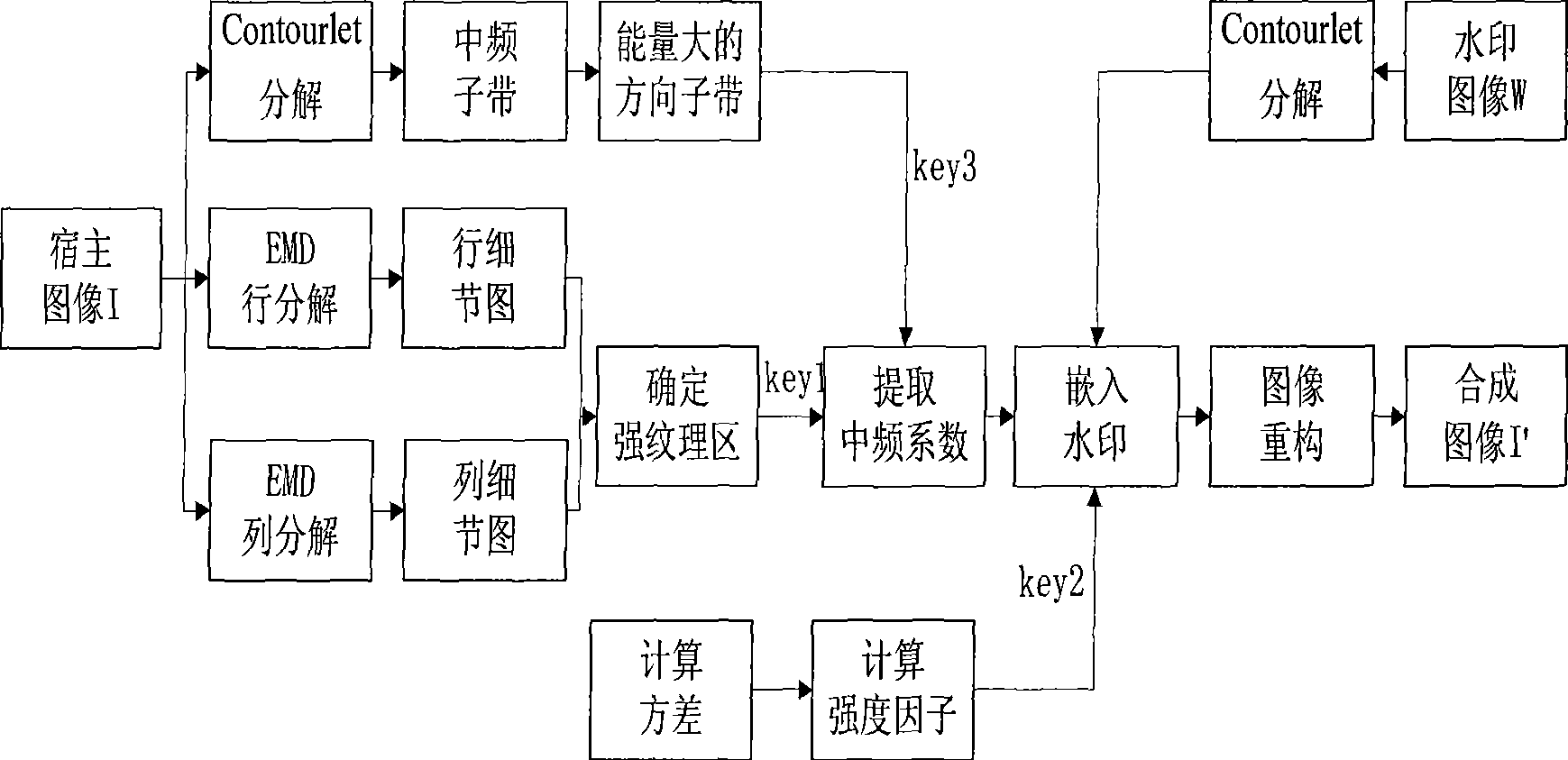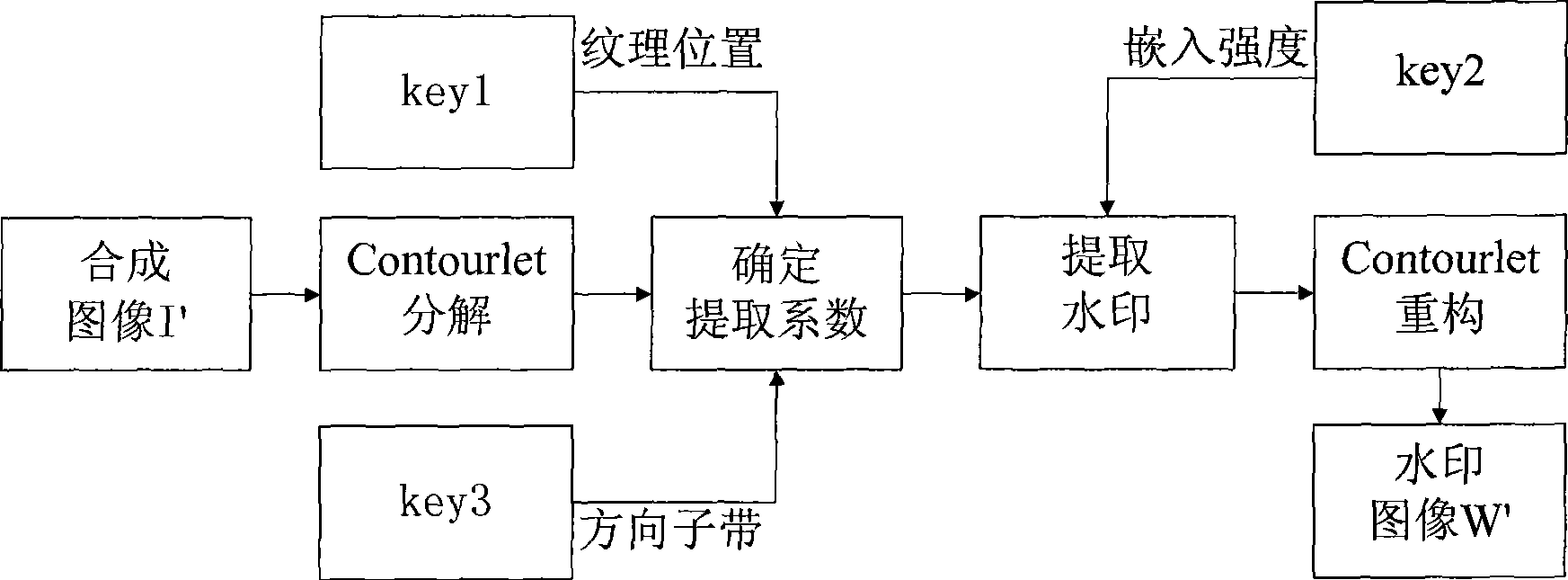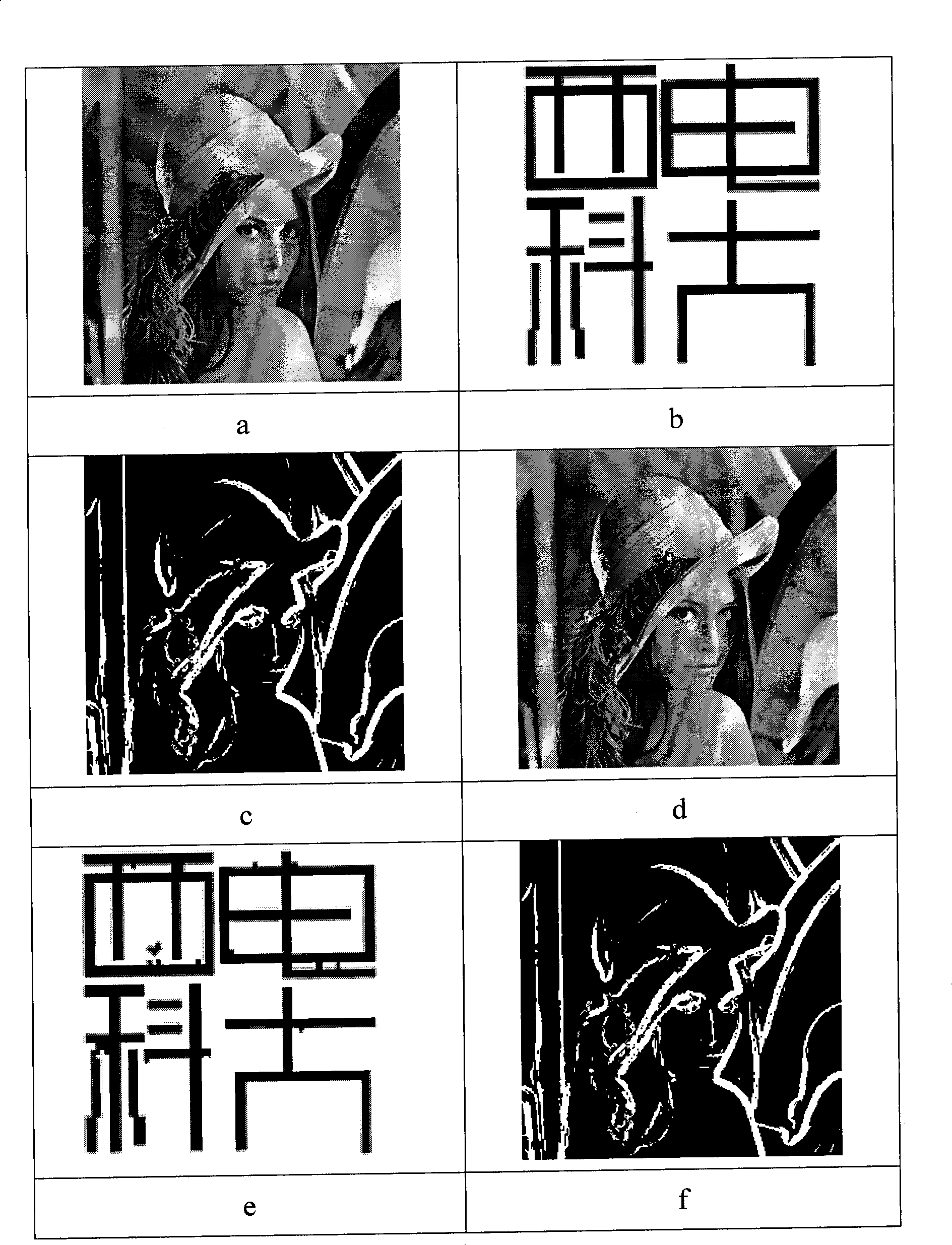Robust image double-watermarking method
A robust, image-based technology, applied in the field of digital image double watermarking, can solve problems such as not combining human visual texture characteristics, achieve excellent denoising ability, improve efficiency, and improve robustness
- Summary
- Abstract
- Description
- Claims
- Application Information
AI Technical Summary
Problems solved by technology
Method used
Image
Examples
Embodiment Construction
[0036] 1. Introduction to basic theory
[0037] 1.1 Theoretical basis of EMD
[0038] In 1998, Huang et al. proposed a new signal processing method, the Empirical Mode Decomposition (EMD) method, to process non-stationary and nonlinear signals. According to the local characteristics of the signal, the EMD method can adaptively decompose it into components of high to low frequency and local narrowband, that is, the intrinsic kernel function IMF (Intrinsic Mode Function). This decomposition algorithm is proposed by Huang et al. The sieve method is called the sieving process. The signal x(t) is then decomposed into the sum of multiple local narrowband IMFs and a monotonic residual trend function.
[0039] The EMD decomposition on the signal x(t) can be expressed as the formula:
[0040] x ( t ) = Σ i = 1 n ...
PUM
 Login to View More
Login to View More Abstract
Description
Claims
Application Information
 Login to View More
Login to View More - R&D
- Intellectual Property
- Life Sciences
- Materials
- Tech Scout
- Unparalleled Data Quality
- Higher Quality Content
- 60% Fewer Hallucinations
Browse by: Latest US Patents, China's latest patents, Technical Efficacy Thesaurus, Application Domain, Technology Topic, Popular Technical Reports.
© 2025 PatSnap. All rights reserved.Legal|Privacy policy|Modern Slavery Act Transparency Statement|Sitemap|About US| Contact US: help@patsnap.com



